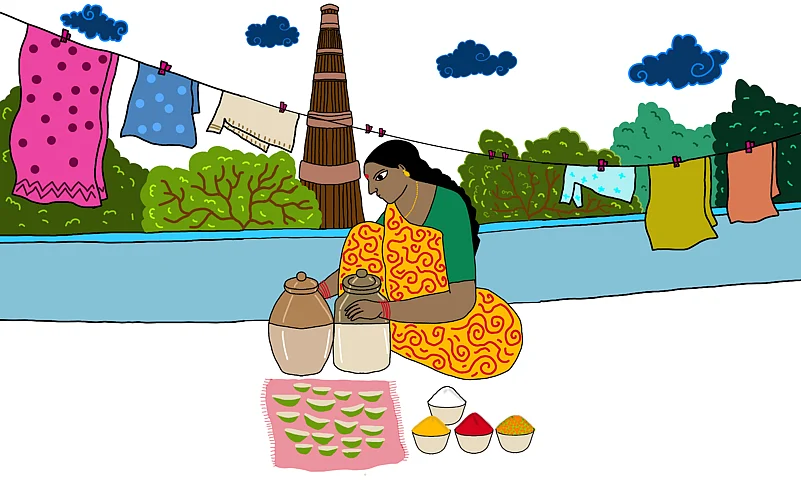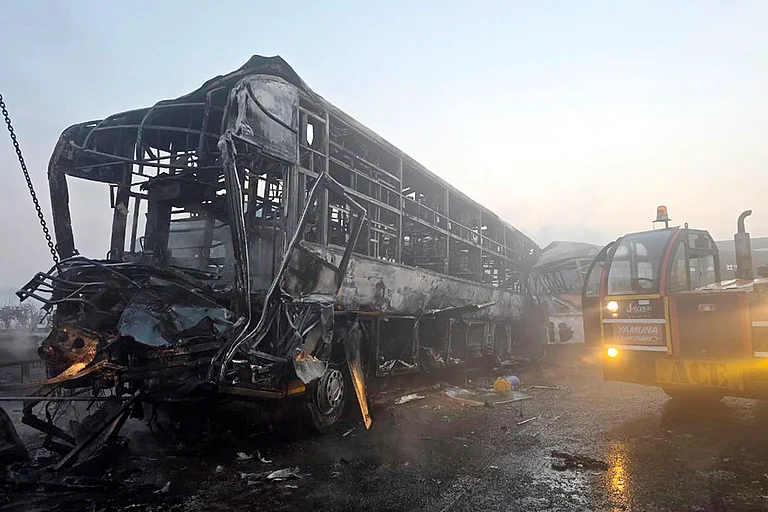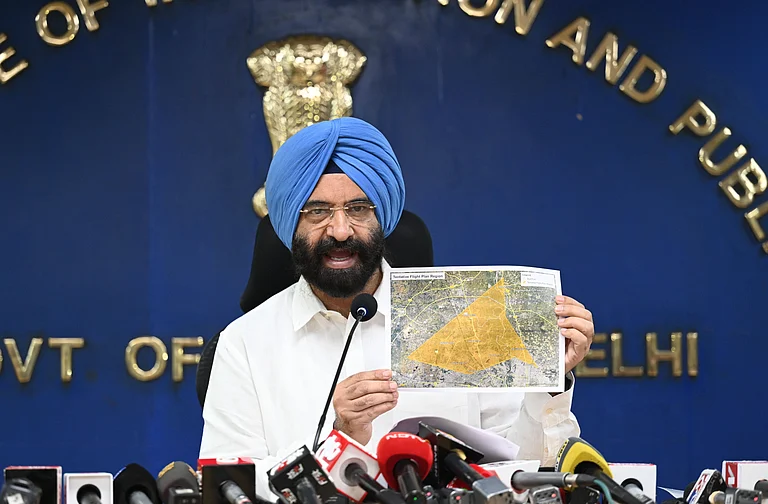
Resident peacocks are not a rarity in several institutions in Delhi and in this season, they start cawing and then slowly spread their majestic feathers and dance.
It is jamun season too, with many streets around central Delhi and all over the NCR region full of fruit laden trees, with jamun sellers doing brisk business.
The best mangoes from the Indo-Gangetic plains also arrive in the markets after a robust shower.
Monsoon in Delhi arrives suddenly, and the Yamuna waits all year long to see her banks and flood-plains full of gushing water, breathing life to plantations of flowers and vegetables beds, tended against the backdrop of the city that mostly looks grey, but not on account of its rain clouds.
At times, the spate causes untold misery, and people living in its banks have to be moved to higher ground, traffic comes to a halt, even Delhi Metro that fires away like lightning, chugs slowly in deference to the fickle weather gods.
Yamuna has often been considered a temperamental river, changing its course at will, quite like a teenager. Every few years, rain in Delhi can be devastating, roads are flooded, trees uprooted, and if one is not careful accidents can take place.
But children welcome the rains. Resident peacocks are not a rarity in several institutions in Delhi and in this season, they start cawing and then slowly spread their majestic feathers and dance. The peahens look on in awe, and children gaze out of their windows at their luckier friends who can put up such a stunning performance with no need of a stage nor a costume! From the confines of a classroom, even a drizzle provides relief and if it rains during the mid-day recess, there are screams and whoops of delight, with children running down the stairs like thunder to get a chance to dodge their teachers and run to the fields! Paper boats, a dash at the goalpost, splashing water at a friend, getting soaking wet, such abandon is not to be given a miss in this once-a-year-limited time offer.
The city looks verdant with trees growing taller along the highways, the green, greener. The grand monuments, the Red Fort, India Gate, Rashtrapati Bhavan to name a few, look like freshly-bathed happy infants catching an afternoon nap, perhaps spared the steady stream of visitors. It is jamun season too, with many streets around central Delhi and all over the NCR region full of fruit laden trees, with jamun sellers doing brisk business.
Early in the morning, one can see groups of young boys and girls around a jamun tree, a few shaking the branches with bamboo poles, the others holding a large old bedcover or blanket to collect the fruit that will then be sold. Nature gives us so much unasked, like our parents, all year round. The best mangoes from the Indo-Gangetic plains also arrive in the markets after a robust shower. Langda, dussehri, the pick of the orchards of Uttar Pradesh, arrive by the truckloads at markets in Delhi. Women look forward to a particular variety of mango known to lend a special flavour to their pickle, the ramkela.
Pickling is a tradition that dates back several centuries, globally. In India, mango pickle is common to all states. In Uttar Pradesh, that borders Delhi, mango harvests are plentiful. But those who are picky about pickling prefer to wait and not buy the pebble-sized unripe mangoes wrenched from the trees by rain in the early mango season, and wait patiently for the ramkela, big and firm like a tightly clenched fist. Even the local vendors, not only wizened grandmothers with a prized recipe curled in every wrinkle, know that this variety is the gold standard as pickle-picked mangoes go, dense and packed with flavour.
After buying a couple of kilos, the mango is cut into uniform pieces by the mango vendor at the local market with moveable curved iron blade attached to a thick wooden board. Steeped in pungent mustard oil and a blend of spices, the pickle slowly releases flavour to be savoured, especially during the foggy winter months when mangoes and the monsoon are a distant yet welcome dream.
Narrating a legend about the Yamuna that she often does in her social science classes, leaving children fascinated, Soyna Katoch, teacher and ceramic artist, says: “It is believed there were two sister hillocks called by various endearing names, at times Satto-Batto or Sitta and Bitta, and the Yamuna was ‘made’ to flow between them, so that the city was fertile and the river did not run amok. Over time, one of the hillocks was flattened, and the other is probably the site where the Jama Masjid was built. She says: “Shahjehanabad is designed like a bow and arrow, with the ramparts of the grand Red Fort serving as the arc of the bow, the Chandni Chowk road as the arrow, and the flowing Yamuna its string.”
The monsoon is also the season of not only the ambua ki daari (the mango branch) but also the koyal whose plaintive yet joyous call can be heard magically through the din of city traffic. Poets and musicians of yore have composed ragas and poems inspired by the rains in the Indo-Gangetic plains and most people in the subcontinent would have heard a few popular strains of famed bandishes of Hindustani classical music like ambua ki daari koyelia bole or bole re papiha.
To Kavi Guru Rabindranath Tagore, to whom school was no better than prison, rains meant The Flower School:
When storm-clouds rumble in the sky and June showers come down.
The moist east wind comes marching over the heath to blow its bagpipes among the bamboos.
Then crowds of flowers come out of a sudden,
from nobody knows where, and dance upon the grass in wild glee.
Mother, I really think the flowers go to school underground.
They do their lessons with doors shut, and if
they want to come out to play before it is time,
their master makes them stand in a corner.
When the rain come they have their holidays
Can anyone capture the spirit of the monsoons better or thought of flowers enjoying holidays in the rain!
Soumi Das teaches English at a school in New Delhi. She has written short stories and articles for leading publications. She is from Ranchi, Jharkhand.




















.jpg?w=200&auto=format%2Ccompress&fit=max)



